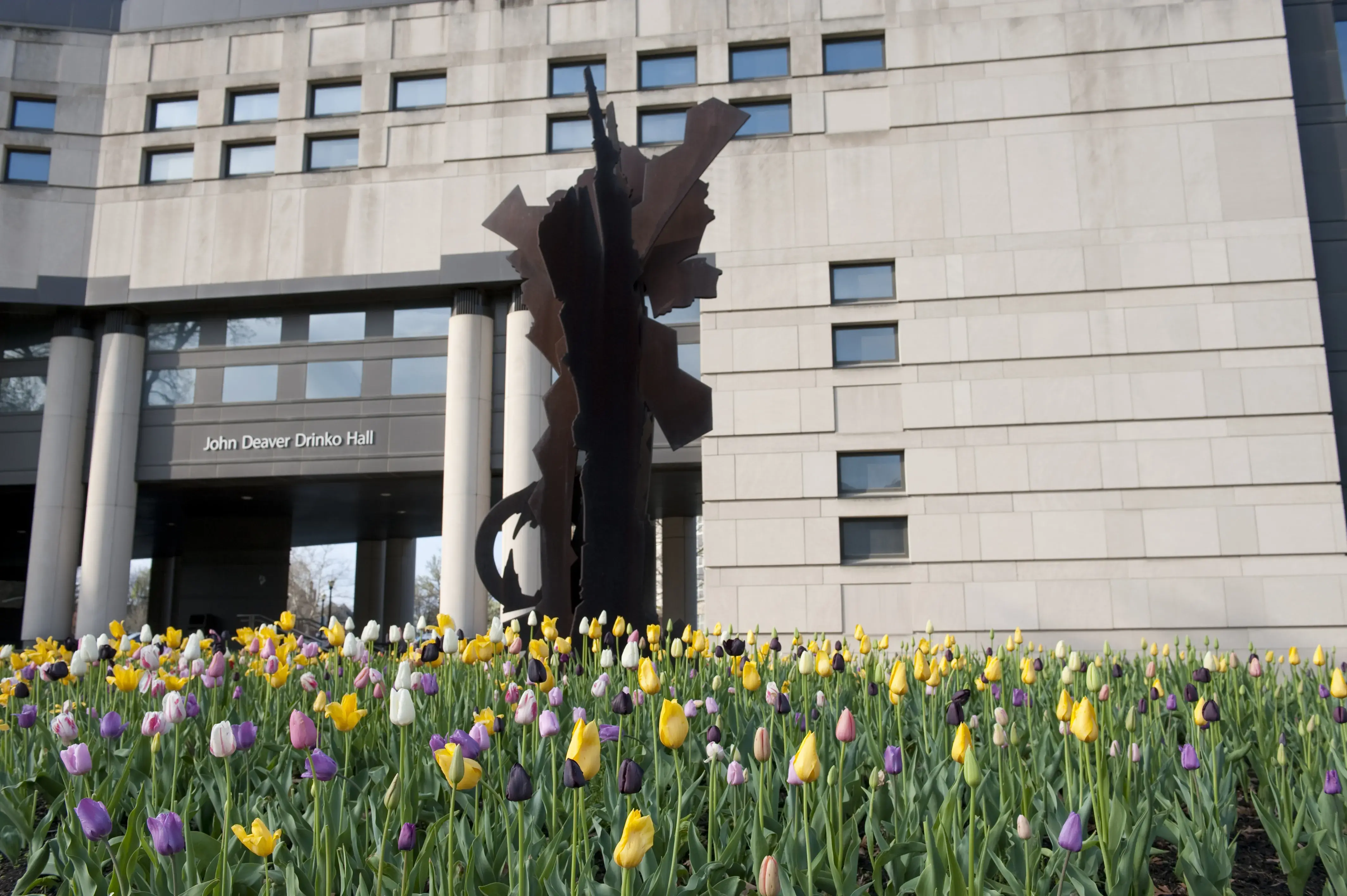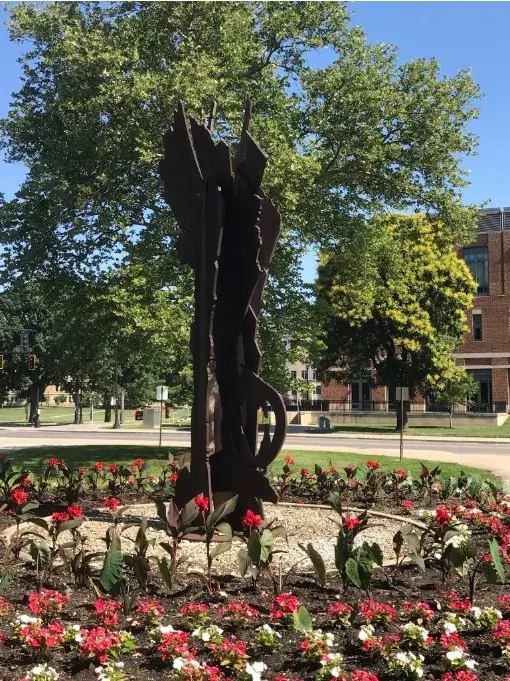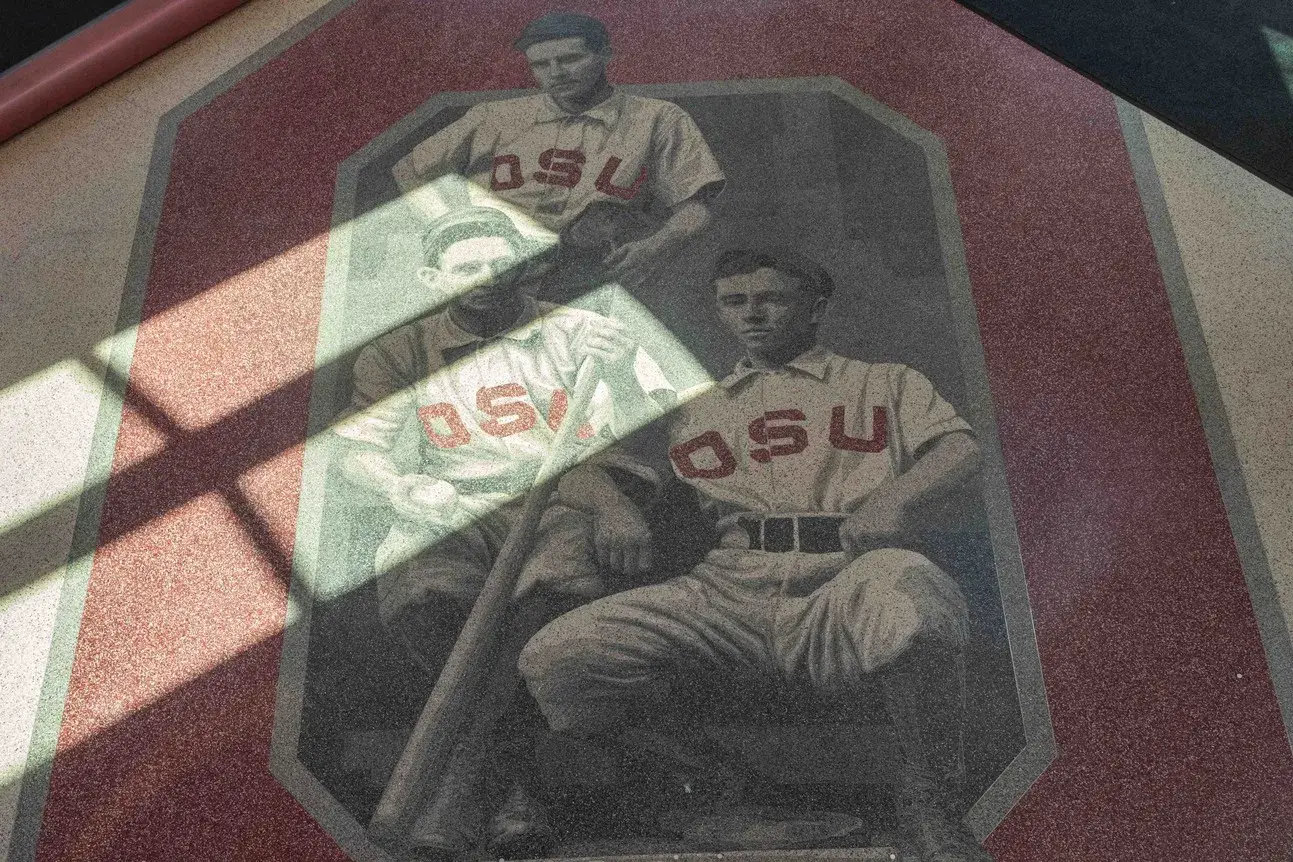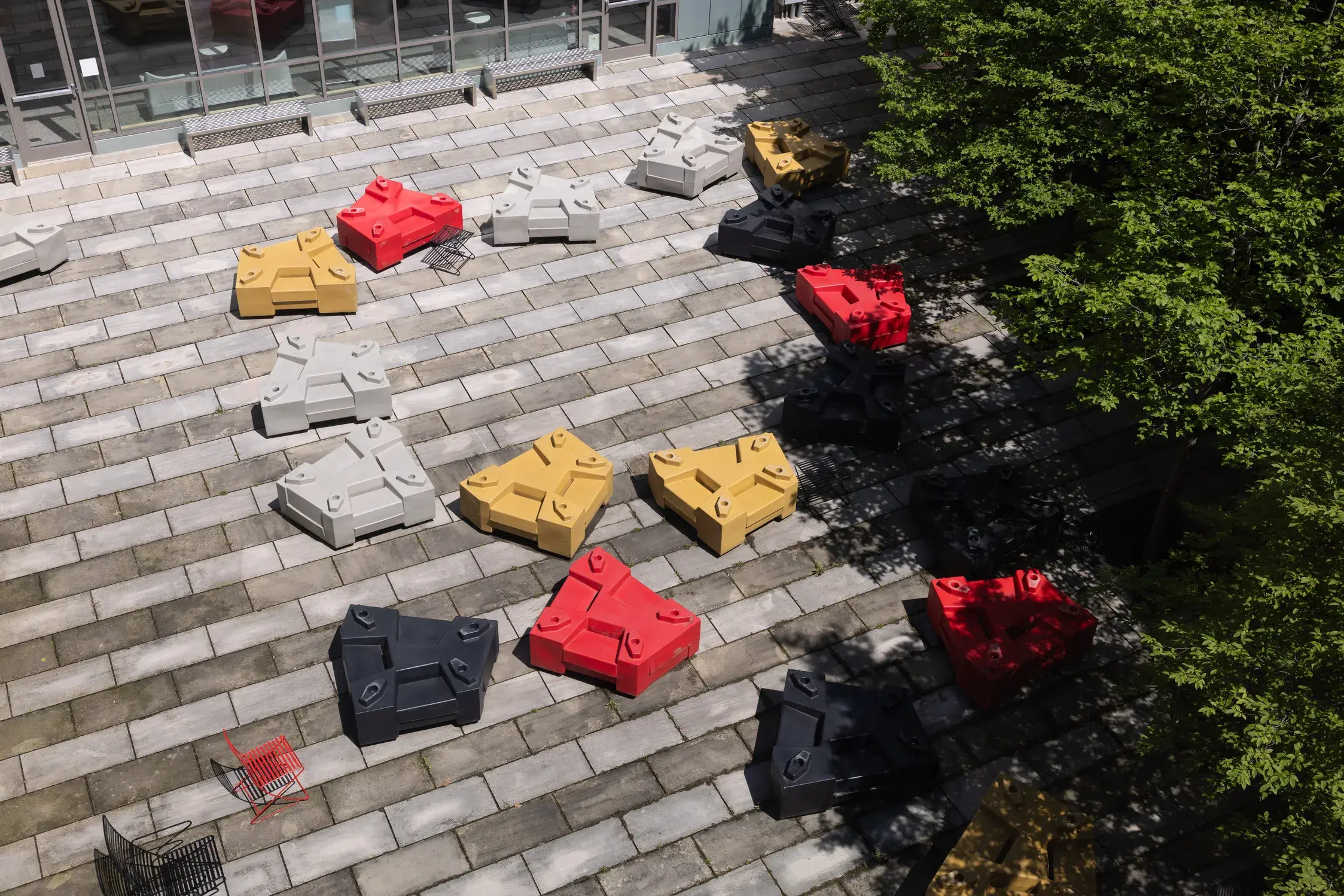
About the Art
Albert Paley’s Gnomon presides over the front lawn of Drinko Hall. The sculpture is comprised of several sheets of weathered steel, whose irregularly cut edges suggest both organic and crystalline forms. The sculpture’s lower half is predominantly vertical but expands and spreads upward like tree branches, a blossoming flower or a splayed- rock crystal formation. A steel arc bulges from the piece on one side near the ground. Within this two-dimensional semicircle, two abstract forms suggest hands, or perhaps calipers, that don’t quite touch. The overall asymmetry of Gnomon means that no two viewpoints reveal the same sculpture. Rather, the work is intended to be understood in 360 degrees. The relationship of the work to temporality is revealed in its name. Gnomon refers to the projecting piece on a sundial that blocks the sun’s rays, indicating the time of day. As the sun moves across the sky, the irregular forms of the sculpture cast a variety of shadows over the lawn on which it is displayed. Since no two views of the sculpture are the same, its shadow also constantly reveals new forms. In that sense, Gnomon stands as an allegory for the law, whose interpretation is likewise constituted from a marriage of precedent and newly emergent perspectives.
Collection of The Ohio State University. Funded through the Ohio Percent for Art program.
Material
Steel
Location
Outside of Drinko Hall


About the Artist
Albert Paley is an American-born metal sculptor whose early career as a goldsmith and jewelry artist evolved to a monumental scale. In 1969, Paley began teaching at the School for American Craftsmen in Rochester, New York. He was deeply influenced by the counter-culture movements of the 1960s and felt that contemporary jewelry provided a genuine means for individuals to express themselves. His jewelry designs were about nonconformity, social revolution and the part-to-whole relationship. In 1974, Paley designed a set of seven-and-a-half-foot metal doors for the Renwick Gallery’s national design competition. His work, Portal Gates, won him the competition and became a museum symbol. This opened the figurative door for his career, and he has since created massive-scale metal sculptures across the United States. Two of these are Sentinel, located at the Rochester Institute of Technology, and a grand entry gate at the Cleveland Botanical Gardens.


